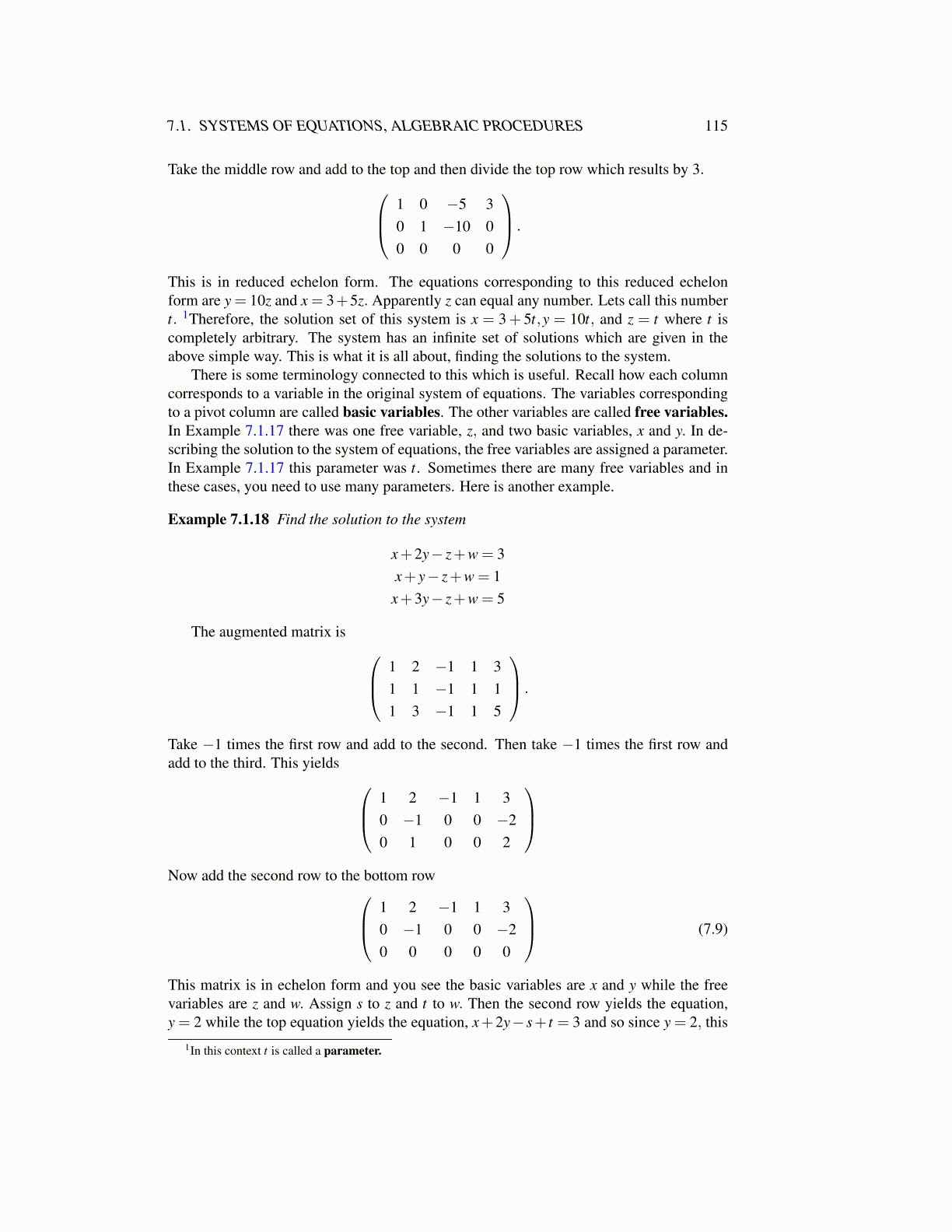
7.1. SYSTEMS OF EQUATIONS, ALGEBRAIC PROCEDURES 115
Take the middle row and add to the top and then divide the top row which results by 3. 1 0 −5 30 1 −10 00 0 0 0
.
This is in reduced echelon form. The equations corresponding to this reduced echelonform are y = 10z and x = 3+5z. Apparently z can equal any number. Lets call this numbert. 1Therefore, the solution set of this system is x = 3+ 5t,y = 10t, and z = t where t iscompletely arbitrary. The system has an infinite set of solutions which are given in theabove simple way. This is what it is all about, finding the solutions to the system.
There is some terminology connected to this which is useful. Recall how each columncorresponds to a variable in the original system of equations. The variables correspondingto a pivot column are called basic variables. The other variables are called free variables.In Example 7.1.17 there was one free variable, z, and two basic variables, x and y. In de-scribing the solution to the system of equations, the free variables are assigned a parameter.In Example 7.1.17 this parameter was t. Sometimes there are many free variables and inthese cases, you need to use many parameters. Here is another example.
Example 7.1.18 Find the solution to the system
x+2y− z+w = 3x+ y− z+w = 1x+3y− z+w = 5
The augmented matrix is 1 2 −1 1 31 1 −1 1 11 3 −1 1 5
.
Take −1 times the first row and add to the second. Then take −1 times the first row andadd to the third. This yields 1 2 −1 1 3
0 −1 0 0 −20 1 0 0 2
Now add the second row to the bottom row 1 2 −1 1 3
0 −1 0 0 −20 0 0 0 0
(7.9)
This matrix is in echelon form and you see the basic variables are x and y while the freevariables are z and w. Assign s to z and t to w. Then the second row yields the equation,y = 2 while the top equation yields the equation, x+2y− s+ t = 3 and so since y = 2, this
1In this context t is called a parameter.